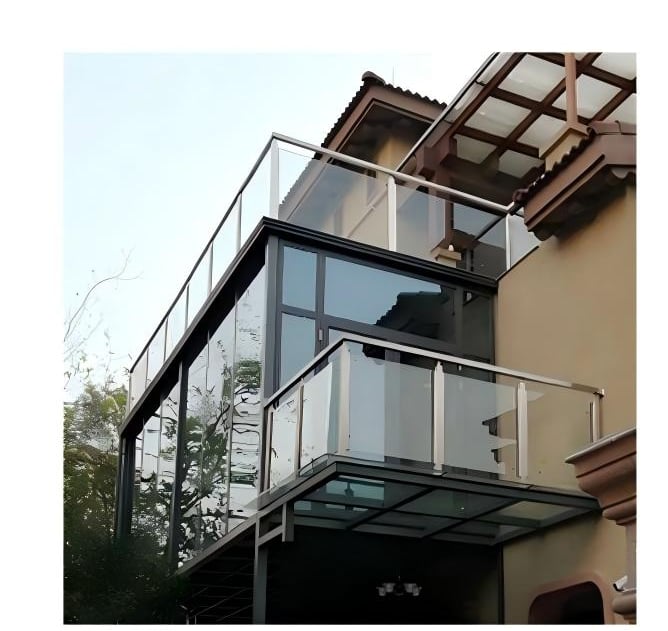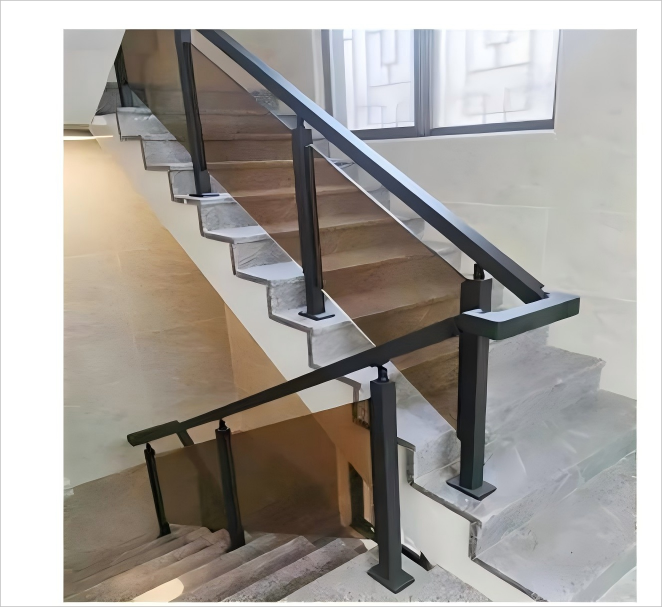Custom Aluminum & Wrought Iron Doors
5 Advantages of Aluminum Windows and Doors in Modern Architecture
Discover why aluminum windows & doors dominate modern builds: durability, energy efficiency, design freedom & more. Essential insights for construction pros.
7/1/20254 min read


Durability and Strength
Aluminum is a material renowned for its exceptional strength-to-weight ratio, making it a preferred choice in the design of modern architecture, particularly for windows and doors. The inherent properties of aluminum provide several advantages that contribute to its growing popularity among architects and builders. Unlike traditional materials such as wood or vinyl, aluminum does not experience issues like warping, cracking, or swelling, which can compromise the structural integrity of window and door frames over time.
One significant benefit of aluminum windows and doors is their durability, which contributes to an extended lifespan. Aluminum is resistant to the corrosive effects of moisture and various weather conditions, allowing it to perform consistently well regardless of climate. This resistance not only enhances the appearance of the frames but also ensures that they retain functionality and aesthetics for many years, reducing the need for frequent replacements.
Additionally, the strength of aluminum contributes to a reduced maintenance burden. Unlike wooden frames that may require regular painting or treatment to protect against the elements, aluminum maintains its finish with minimal upkeep. This quality is particularly beneficial for homeowners and commercial property owners looking for long-lasting solutions that save both time and resources.
Moreover, the robustness of aluminum adds a layer of security against potential break-ins. The material's inherently strong structure makes it difficult to compromise, providing peace of mind to occupants. Its ability to withstand adverse weather elements—such as heavy winds, rain, and even hail—further reinforces its status as a reliable option for modern architectural designs. Overall, the durability and strength of aluminum materials are key contributors to their effectiveness in contemporary window and door applications.
Energy Efficiency
In recent years, advancements in technology have significantly enhanced the energy efficiency of aluminum windows and doors. One of the most notable innovations is the introduction of thermal breaks. These thermal breaks serve as insulative barriers between the exterior and interior of the frames, effectively reducing heat transfer. This feature is particularly advantageous in climates where temperature fluctuations are common, as it helps maintain a comfortable indoor environment, reducing the reliance on heating and cooling systems.
Another effective method to improve the energy efficiency of aluminum windows and doors is through the use of double-glazing. Double-glazed units consist of two panes of glass separated by a sealed airspace, which acts as an additional layer of insulation. This reduces the amount of heat that escapes during colder months and minimizes the influx of heat during warmer months. As a result, homeowners can enjoy reduced energy costs associated with climate control, making aluminum windows and doors a financially sound investment in the long run.
In addition to cost savings for homeowners, energy-efficient aluminum windows and doors contribute substantially to sustainable living practices. By utilizing these features, property owners can significantly lower their carbon footprint, aligning with an increasing demand for sustainable building materials. Moreover, energy efficiency plays a critical role in achieving green building certifications, such as LEED (Leadership in Energy and Environmental Design). Buildings that incorporate energy-efficient materials are better positioned to meet these certification standards, which can enhance the overall value and marketability of the property.
Design Flexibility and Aesthetic Appeal
Aluminum windows and doors are celebrated for their remarkable design flexibility, making them a favored choice in modern architecture. The inherent malleability of aluminum allows architects to fabricate this material into a vast array of shapes and sizes. This versatility empowers designers to explore innovative and unique concepts, resulting in striking structures that capture attention and elevate the overall aesthetic of any building.
One of the notable aspects of aluminum is its ability to seamlessly integrate into various architectural styles. Sleek, contemporary designs benefit from the clean lines and streamlined profiles that aluminum can offer. The minimalist aesthetic is particularly enhanced by the narrow frames of aluminum windows and doors, which maximize natural light without sacrificing structural integrity. Conversely, aluminum can also be fashioned to suit more traditional styles, enhancing heritage buildings and classical designs with modern materials that do not compromise their historical significance.
Furthermore, the aesthetic versatility of aluminum extends to a wide range of colors and finishes, allowing for customizations that align with both personal tastes and broader architectural themes. Powder coating and anodizing processes enable a diverse palette that can mimic the look of wood, stone, or metallic finishes, providing options that complement a myriad of design preferences. This variety not only enhances façade appearances but also contributes to the overall character and identity of a building.
The ability to adapt aluminum windows and doors to different styles, combined with their aesthetic appeal, makes them a valuable asset in architectural design. Consequently, architects now have the freedom to experiment creatively without compromising on functionality or durability. The resulting structures reflect modern sensibilities while remaining versatile enough to resonate with traditional elements, making aluminum an ideal choice in contemporary architecture.
Low Maintenance Requirements
Aluminum windows and doors are increasingly favored in modern architecture for their distinct advantages, particularly their low maintenance requirements. Unlike traditional materials such as wood, which demand regular painting and staining to maintain their appearance and prevent deterioration, aluminum products offer a more convenient solution. With aluminum, homeowners and property managers can enjoy durable finishes that resist fading, chipping, and peeling. This inherent resilience translates to significant time savings, as there is no need for frequent touch-ups or thorough restoration work.
Cleaning aluminum windows and doors is also remarkably straightforward. A simple combination of soap and water is typically sufficient for routine cleaning, ensuring that the surfaces maintain their aesthetic appeal with minimal effort. This ease of maintenance is especially beneficial in commercial settings where windows and doors can be exposed to various environmental factors and pollutants. In contrast to other materials that may require specialized cleaning solutions or techniques, aluminum provides a practical alternative that emphasizes convenience.
Moreover, the low maintenance nature of aluminum products can lead to notable cost reductions over time. Fewer maintenance tasks mean reduced labor costs, and the longevity associated with aluminum implies that replacements or repairs will be less frequent. This factor is particularly appealing for property managers and business owners who strive to optimize operational efficiency while maintaining high standards of safety and visual appeal. Adopting aluminum windows and doors not only enhances the architectural integrity of a space but also simplifies resource allocation in terms of maintenance efforts.
Ultimately, the low maintenance requirements characteristic of aluminum windows and doors contribute significantly to their appeal in today’s architectural landscape, ensuring that they remain a practical and stylish investment for both residential and commercial applications.

